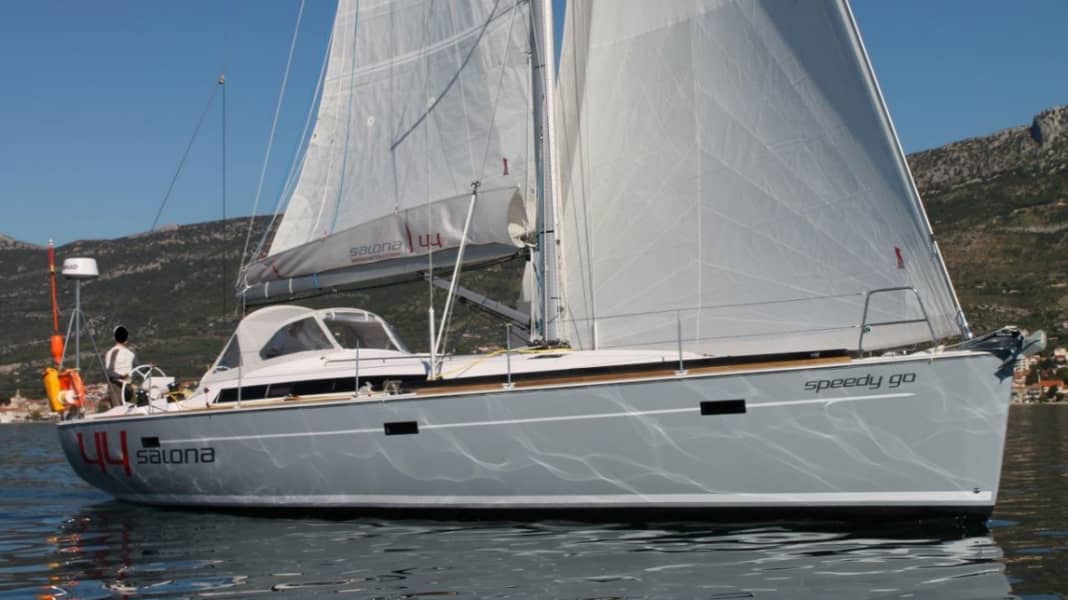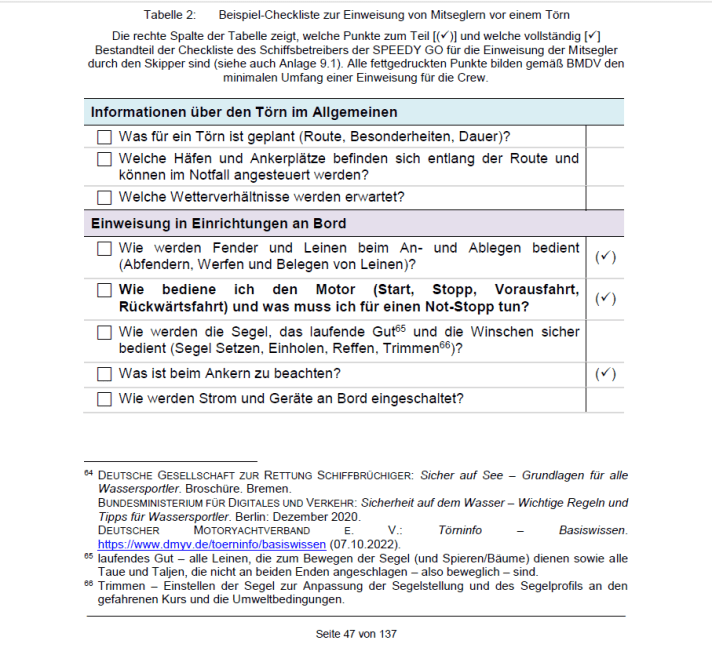Marine accident resulting in death: BSU report on the "Speedy Go" case on the Flensburg Fjord published
Lasse Johannsen
· 01.06.2023

We already reported on the interim report in February, in which the facts of the case were explained in detail:
According to the report, the skipper of the 13.50-metre-long commercial sailing yacht "Speedy Go" fell overboard and drowned on 8 April 2022 at 12:19 (CEST) after an unsuccessful sailing manoeuvre. He had previously gone to the forecastle, as the sheets of the headsail were said to have got caught there during a jibe. After clearing them, he had righted himself just as the wind came into the sail again, the yacht heeled and picked up speed again. The skipper then fell backwards over the guard rail into the water. The co-sailors were unable to hoist him back on board, although he was back at the stern of the "Speedy Go" shortly afterwards. One of the co-sailors then got into the water himself to help, but drifted off. The crew were then able to rescue him from the water. The skipper, however, who had also drifted off in the course of this incident, was picked up by a rescue helicopter and died a short time later as a result of the accident.
The interim report in February still left open how the skipper's death could have been prevented in the specific case and what general recommendations for action can be derived from the drama for recreational boating. This is now provided in the final 137-page investigation report with numerous labelled photos, map sections, sketches and tables.
Failure to secure oneself led to going overboard; according to the BSU, a lifejacket could have prevented drowning
To summarise, the accident investigators state:"The cause of the skipper going overboard was a lack of self-securing by means of a lifeline to prevent falling overboard when going to the forecastle in connection with taking up an unsafe position on the leeward side of the yacht. The main cause of the skipper's drowning was his failure to wear a lifejacket."
And further: "Several other aspects were recognised as contributing factors to the accident. Potential for optimisation was identified in relation to the ship operator's safety and quality management, cruise preparation and (safety) briefing, crew management, safe behaviour on deck, ship equipment, emergency management and the content of examinations in commercial recreational boating. Safety recommendations were addressed to the Federal Ministry for Digital and Transport Affairs, the German Maritime Search and Rescue Association, the ship operator and the shipyard of the SPEEDY GO."
Numerous recommendations to ministries, sea rescuers, training companies, yacht sailors and shipyards
The Federal Bureau of Maritime Casualty Investigation recommends that the Federal Ministry for Digital and Transport Affairs and the German Maritime Search and Rescue Association harmonise the content of their publications in order to avoid different information and to develop and disseminate a standardised checklist for safety briefings on board.
Operators of training yachts are advised, among other things, to revise their safety management system with regard to the instruction of the crew, the writing down of important requirements for the personnel and their regular further training.

The BSU also recommends that, if at all necessary, rescue equipment should only be additionally secured with suitable cords or rubber expanders to ensure that it is quickly ready for use.
Urgent appeal for compliance with the principles of good seamanship
In addition, training companies are advised to regularly instruct their ship's commands to follow the following principles of good seamanship:
- 1. Consistent use of lifelines and safe movement on deck,
- 2. Consistent wearing of life jackets,
- 3. comprehensive (safety) briefing before the start of the cruise,
- 4. allocation of emergency roles before the start of the trip,
- 5. carrying out practice manoeuvres at the start of the cruise,
- 6. wearing appropriate sailing clothing,
- 7. implementation of the principles of crew management,
- 8. Correct behaviour after a fall into cold water.
Shipyards are advised not to equip their yachts with mobile bathing ladders in future, as these are not suitable means of re-entry.

